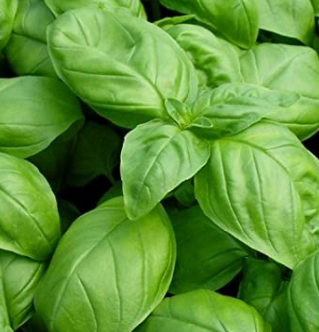
Growing Basil
- Details
- Category: Grow Your Own
- Created on Friday, 06 November 2020 16:53
- Hits: 1147
Basil is a tender annual herb in subtropical region, and it’s considered a perennial everywhere else. Basil is one of the easy herbs to grow, especially in warm sunny and conditions. It’s also easily damaged by cold weather and frost will kill it.
It’s normally an outside garden herb across North America yet in Florida we grow it on the patio all year long, albeit with its own special herb issues. It’s become a staple that makes our herb ranch smell like hungry.
We also like to keep some basil in the kitchen. I’ll cut a stalk, remove bad leaves, and leave enough stem to stand in a clear glass of water. You’ll find that it’s as aromatic in the kitchen as it is in the garden. Then simply use that basil as you need it, however we prefer to cut it fresh for cooking.
We use a lot of basil and find it’s a great addition to most vegetables, seafood or chicken dishes, and nearly all salads. Yet basil also has a special place in our hearts because of our Italian dishes, especially a margherita pizza. My wife would argue with me and insist basil is the key ingredient in pesto. In any case, basil is frequently paired with tomatoes in recipes. The flavor of basil intensifies when cooked and it has a more subtle taste when raw… experiment with it.
If you’re serious about gardening then you should know that basil is a good companion plant that is claimed to enhance the growth of both tomato and pepper neighbors.
When healthy, basil grows in bushes that are 15 to 30 inches tall and wide depending on the variety.

Planting Basil
1. Best locations are in full sun with six to eight hours of sun daily. Basil can tolerate light shade. In the hotter climates a full day of summer sun might be too much. For inside, basil will grow easily in a sunny window
2. Soil should be well-drained yet moisture-retentive. Basil prefers a soil pH of 5.5 to 7.5.
3. Starting from seeds should be indoors. You can start as early as six weeks before the last frost for planting out in the garden after the weather has warmed, maybe three more weeks after the last frost. Basil will germinate in about seven to 10 days. Purple leaf varieties need slightly warmer soil temperatures to germinate. I plant at least two pots every couple of months.
4. Repot or transfer to the garden only after all danger of frost has passed. Make sure the pot is at least six inches deep for best root growth.
5. Water your basil just enough to keep the soil moist, yet not too wet. The leaves will wilt when it’s too dry.
6. Care of basil takes a bit of effort, yet the return is excellent herbs. Keep basil pinched back to produce more leaves. Pinching stem tips frequently keeps it from flowering and keep plants bushy and full. This will encourage branching and more leaves for harvest. If some stalks get tall you may need to stake them.
7. Pests like snails and slugs are best handpicked and destroyed. I’d avoid poisons for this. Aphids may find your basil leaves. You’ll want to knock them off the plant with a strong blast of water. I normally just squish them with my fingers.
8. Diseases for basil are maddening in the cool months. Damping-off fusarium wilt will cause the plant to die in a couple of days. Remove and destroy infected plants. In the south, by far, out biggest winter season basil problem is downy mildew. This is a contagious disease that seems to like surprise attacks. It’s transmitted via spores that can be carried by hand, tools or even the wind. It’s when we get cool, damp night then back to warmer days. Nighttime temperatures below 60 degrees Fahrenheit will cause its leaves to turn dark. Disease reasons are why we plant new basil seeds every couple of months to ensure a steady supply.
9. Harvesting your basil begins about two months after seeding. Regular harvesting will product the bushiest plants and keep them strong. Harvesting leaves in the morning is when they are most flavorful. And be sure to harvest the entire plant before that first frost.
**********************************
Rancher Ron has been helping ITG research sustainable, at-home gardening throughout 2020 to not only harvest vegetables for the kitchen, but also as a hobby that we can all enjoy as we spend more time at home.Focus on Health
Best Defense is Health
It is clearly undisputed that the best preventative medicine is good health. People challenged us to add more to our weight loss program. The more they were asking about was simply more health. Not only what to eat more of, but what to consume less of. More about what we can drink, plant, buy, eat, or study to be healthier. We all want more out of life and we've found excellent tips, tricks, advice and even recipes to improve our lives. Everything we've found that makes sense to us has been small in nature. After all, by definition, if you're looking here for ideas then you're well ahead of the game. Small victories!





